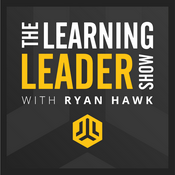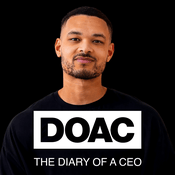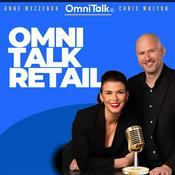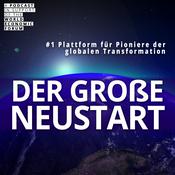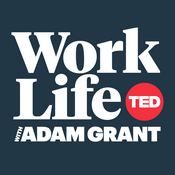76 episodes
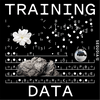
Training General Robots for Any Task: Physical Intelligence’s Karol Hausman and Tobi Springenberg
1/06/2026 | 1h 1 mins.
Physical Intelligence’s Karol Hausman and Tobi Springenberg believe that robotics has been held back not by hardware limitations, but by an intelligence bottleneck that foundation models can solve. Their end-to-end learning approach combines vision, language, and action into models like π0 and π*0.6, enabling robots to learn generalizable behaviors rather than task-specific programs. The team prioritizes real-world deployment and uses RL from experience to push beyond what imitation learning alone can achieve. Their philosophy—that a single general-purpose model can handle diverse physical tasks across different robot embodiments—represents a fundamental shift in how we think about building intelligent machines for the physical world. Hosted by Alfred Lin and Sonya Huang, Sequoia Capital

Why the Next AI Revolution Will Happen Off-Screen: Samsara CEO Sanjit Biswas
12/16/2025 | 38 mins.
Sanjit Biswas is one of the rare founders who has scaled AI in the physical world – first with Meraki, and now with Samsara, a $20B+ public company with sensors deployed across millions of vehicles and job sites. Capturing 90 billion miles of driving data each year, Samsara operates at a scale matched only by a small handful of companies. Sanjit discusses why physical AI is fundamentally different from cloud-based AI, from running inference on two- to ten-watt edge devices to managing the messy diversity of real-world data—weather, road conditions, and the long tail of human behavior. He also shares how advances in foundation models unlock new capabilities like video reasoning, why distributed compute at the edge still beats centralized data centers for many autonomy workloads, and how AI is beginning to coach frontline workers—not just detect risk, but recognize good driving and improve fuel efficiency. Sanjit also explains why connectivity, sensors, and compute were the original “why now” for Samsara, and how those compounding curves will reshape logistics, field service, construction, and every asset-heavy industry. Hosted by Sonya Huang and Pat Grady, Sequoia Capital

The Rise of Generative Media: fal's Bet on Video, Infrastructure, and Speed
12/10/2025 | 1h 2 mins.
fal is building the infrastructure layer for the generative media boom. In this episode, founders Gorkem Yurtseven, Burkay Gur, and Head of Engineering Batuhan Taskaya explain why video models present a completely different optimization problem than LLMs, one that is compute-bound, architecturally volatile, and changing every 30 days. They discuss how fal's tracing compiler, custom kernels, and globally distributed GPU fleet enable them to run more than 600 image and video models simultaneously, often faster than the labs that trained them. The team also shares what they’re seeing from the demand side: AI-native studios, personalized education, programmatic advertising, and early engagement from Hollywood. They argue that generative video is following a trajectory similar to early CGI—initial skepticism giving way to a new medium with its own workflows, aesthetics, and economic models.Hosted by Sonya Huang, Sequoia Capital

Why IDEs Won't Die in the Age of AI Coding: Zed Founder Nathan Sobo
12/02/2025 | 40 mins.
Nathan Sobo has spent nearly two decades pursuing one goal: building an IDE that combines the power of full-featured tools like JetBrains with the responsiveness of lightweight editors like Vim. After hitting the performance ceiling with web-based Atom, he founded Zed and rebuilt from scratch in Rust with GPU-accelerated rendering. Now with 170,000 active developers, Zed is positioned at the intersection of human and AI collaboration. Nathan discusses the Agent Client Protocol that makes Zed "Switzerland" for different AI coding agents, and his vision for fine-grained edit tracking that enables permanent, contextual conversations anchored directly to code—a collaborative layer that asynchronous git-based workflows can't provide. Nathan argues that despite terminal-based AI coding tools visual interfaces for code aren't going anywhere, and that source code is a language designed for humans to read, not just machines to execute. Hosted by Sonya Huang and Pat Grady, Sequoia Capital

How End-to-End Learning Created Autonomous Driving 2.0: Wayve CEO Alex Kendall
11/18/2025 | 41 mins.
Alex Kendall founded Wayve in 2017 with a contrarian vision: replace the hand-engineered autonomous vehicle stack with end-to-end deep learning. While AV 1.0 companies relied on HD maps, LiDAR retrofits, and city-by-city deployments, Wayve built a generalization-first approach that can adapt to new vehicles and cities in weeks. Alex explains how world models enable reasoning in complex scenarios, why partnering with automotive OEMs creates a path to scale beyond robo-taxis, and how language integration opens up new product possibilities. From driving in 500 cities to deploying with manufacturers like Nissan, Wayve demonstrates how the same AI breakthroughs powering LLMs are transforming the physical economy. Hosted by: Pat Grady and Sonya Huang
More Business podcasts
Trending Business podcasts
About Training Data
Listen to Training Data, The Money Mondays and many other podcasts from around the world with the radio.net app

Get the free radio.net app
- Stations and podcasts to bookmark
- Stream via Wi-Fi or Bluetooth
- Supports Carplay & Android Auto
- Many other app features
Get the free radio.net app
- Stations and podcasts to bookmark
- Stream via Wi-Fi or Bluetooth
- Supports Carplay & Android Auto
- Many other app features


Training Data
download the app,
start listening.



